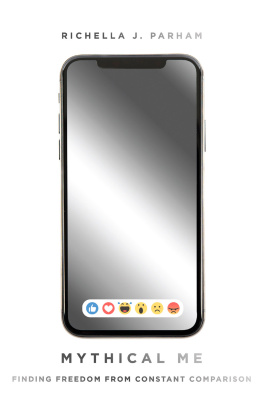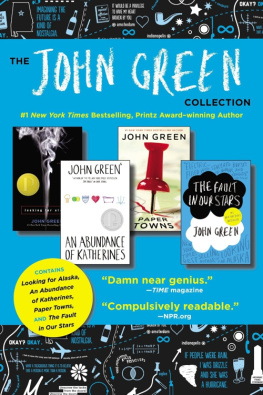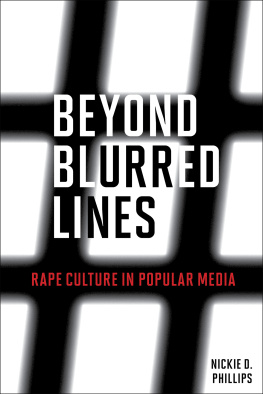Green Media and Popular Culture
Also by John Parham
Green Man Hopkins: Poetry and the Victorian Ecological Imagination. Rodopi: 2010.
The Environmental Tradition in English Literature (ed). Ashgate: 2002.
A Cambridge Global History of Literature and the Environment (co-edited with Louise Westling). Cambridge University Press: 2016.
Green Media and Popular Culture
An Introduction
JOHN PARHAM
John Parham 2016
All rights reserved. No reproduction, copy or transmission of this publication may be made without written permission.
No portion of this publication may be reproduced, copied or transmitted save with written permission or in accordance with the provisions of the Copyright, Designs and Patents Act 1988, or under the terms of any licence permitting limited copying issued by the Copyright Licensing Agency, Saffron House, 610 Kirby Street, London EC1N 8TS.
Any person who does any unauthorized act in relation to this publication may be liable to criminal prosecution and civil claims for damages.
The author has asserted his right to be identified as the author of this work in accordance with the Copyright, Designs and Patents Act 1988.
First published 2016 by
PALGRAVE
Palgrave in the UK is an imprint of Macmillan Publishers Limited, registered in England, company number 785998, of 4 Crinan Street, London, N1 9XW.
Palgrave Macmillan in the US is a division of St Martins Press LLC, 175 Fifth Avenue, New York, NY 10010.
Palgrave is a global imprint of the above companies and is represented throughout the world.
Palgrave and Macmillan are registered trademarks in the United States, the United Kingdom, Europe and other countries.
ISBN 9781137009470 hardback
ISBN 9781137009463 paperback
This book is printed on paper suitable for recycling and made from fully managed and sustained forest sources. Logging, pulping and manufacturing processes are expected to conform to the environmental regulations of the country of origin.
A catalogue record for this book is available from the British Library.
A catalog record for this book is available from the Library of Congress.
For ElaineList of Illustrations
Figures
Diagrams
Acknowledgements
I would like to thank the University of Worcester and, in particular, the Institute of Humanities and Creative Arts for its support throughout the process of writing this book. That support has included a semesters research leave and the priceless provision of a research assistant to assist with the computer games chapter. That chapter could not have been written without the work carried out by Nathan Adams. While, of course, I take responsibility for its content, I am indebted to Nathan for providing much of the primary material, for playing the games (!), and for the added value of his astute, informed ecocritical insights. Within the Institute, I also owe thanks to Jill Terry, Mehreen Mirza and, especially, Antonia Payne. This book, and all my green research and writing, has been sustained intellectually and, more importantly, through the friendship of three cherished colleagues, David Arnold, Pippa Marland, and Anna Stenning.
In Nicola Cattini and Lloyd Langman I have been lucky to have benefitted from first-rate editorial support. Nicola and Lloyd were, at all times, meticulous and exacting, constructively critical, but ever supportive. My thanks, also, to the anonymous referees for generally excellent insights, offered at both proposal and first draft stage. And, lastly, thank you to Alex Diaconescu for his skilled and scrupulous compilation of the index.
As always, I owe enormous gratitude to my many friends and colleagues in the worldwide ecocritical community and, in particular, the UKIreland branch of the Association for the Study of Literature and Environment (ASLE-UKI). Despite, but now alongside, the Literature of ASLEs title, ecocritics are increasingly addressing popular culture. As this book argues and such great artists as Bjrk, Miyazaki, and thatgamecompany attest it will be through popular culture, if anywhere, that environmentalism will reach a wider public. Testifying to the speed with which green media and cultural studies is now proliferating something this book attempts to capture while it is still possible I would like to thank the following for their generosity in allowing me to see work prior to publication: Laurence Coupe, Fred Dalmasso, Greg Garrard, Helen Hughes, and Pietari Kp. Along the same lines, I would like to thank Lux, the artists film and video agency and archive for the opportunity to view several art films and, most notably, Gil Leung for her friendly, helpful organisation.
By the nature of this project, numerous people have suggested possible games, music, films, TV shows, or comedy. For these suggestions and/ or for lending, giving, CDs, DVDs, articles, games etc. some of which fundamentally changed this book Id like to thank: Nathan Adams, David Arnold, Linda de Klerk, Matt Gamble, Isabel Hoving, Matt Jarvis, David Kenrick, Peter and Alison Langham, Pippa Marland, John Robey, Anna Stenning, and Steve Wadlow. Inspiration has come from five years of teaching a Green Media module. This book has been enriched, albeit in an entirely unquantifiable way, by the students who have taken these classes. Their questions, comments, assignments and challenges fertilise my arguments and case studies continually, a notable example being the anonymously written essay that introduced me to the website Ecorazzi.
The author and publishers would like to thank the copyright holders for permission to reproduce the following:
from Jenkins, Keith. 1991. Re-thinking History. London and New York: Routledge. Reprinted with permission from Routledge.
. Reprinted with permission from Undercurrents.
Lastly, my thanks, as ever, to Isaac and to Elaine, my partner, to whom this book is dedicated. Contrary to my oldest friend Peters recent quip (in relation to an upcoming cycle tour), Elaine is nobodys domestique; but she is my best friend, English language adviser, fellow green, and fellow runner.
John Parham
Crystal Palace
Park May 2015
Foreword
From eco-pessimism to the politics of possibility
This book is focused around the three approaches set out in the quotes below: a critical environmentalist position that rejects, and does not differentiate between, green media and popular culture; a view that incorporates green thinking into consumer capitalism; and Sean Cubitts argument that environmentalism has to engage with popular forms, however compromised they may be.
I think that among children an addiction to television, even educational television, at the expense of play and contact with Nature coarsens and degrades both the mind and the spirit, but I cannot prove it. (Ehrenfeld 1981: 243)
Wow, I dont know if anyone has heard this, or if anyone has voted for this, but Grandaddys Nature Anthem, I think, is THE environment song. Google it and look for the video, its great. Anyways, here are the lyrics (you might know it from the Honda Civic Hybrid commercials). (Peter, from Treehugger.com; see Thomas 2005)
In the absence of citizens media, we have no better place to look than the popular media for representations of popular knowledge and the long-term concerns so little addressed in dominant political and economic discourse. In their own way as complex as the language of scientific papers or policy documents, popular media think aloud and in public about who we are, where we are going, and what debts we owe to the world we live in [...] Though many films are predictably bound to the common ideologies of the day, including ideologies of nature, many are far richer in contradictions and more ethically, emotionally and intellectually satisfying than much of what passes for eco-politics today. (Cubitt 2005: 1)









